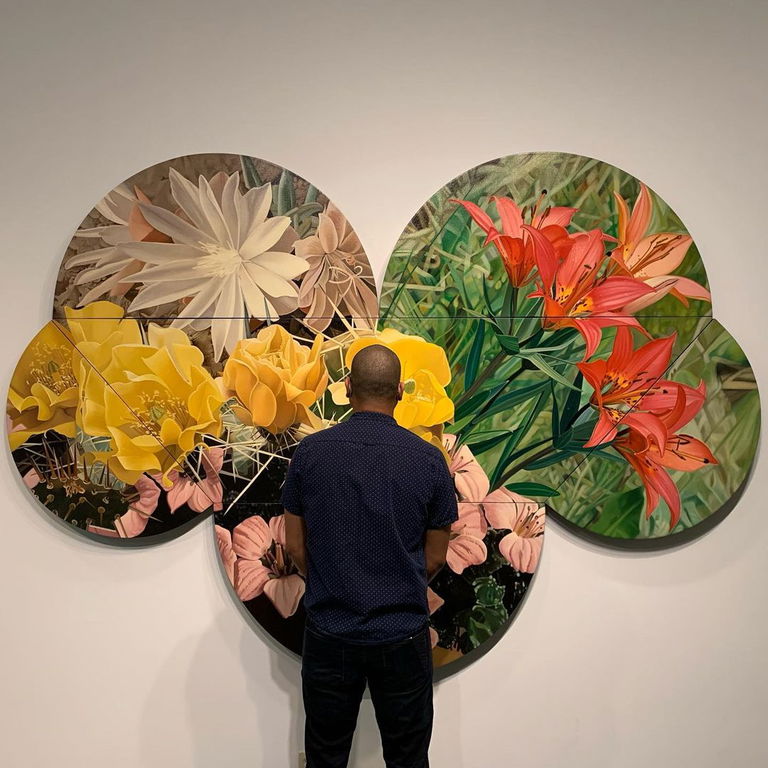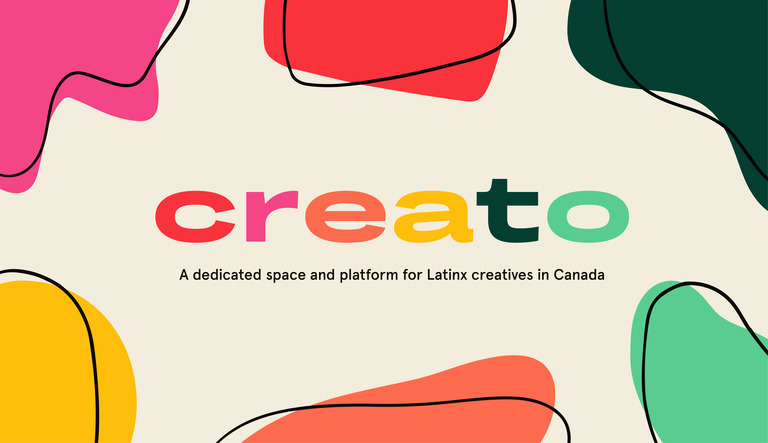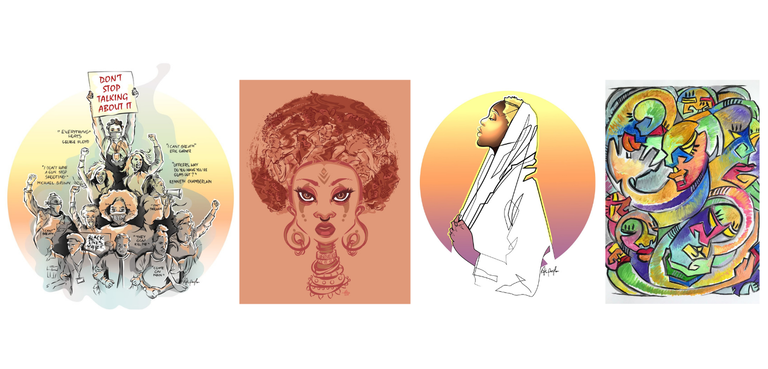
Make Room For... Alia G. Peoples
Culture Days x Alia G. Peoples
Apr 19, 2021
Introducing the Make Room For… Series - a shout-out to new or rising artists, creatives, and/or collectives from across the country. We’re spotlighting those who are making waves in their practice, building community, creating boldly, and sharing their visions for reshaping the future of arts and culture in Canada. Say hello to Alia G. Peoples, an artist and activist starting important conversations on anti-Black racism through creative expression. We wanted to know more about what influences her artistic style, the art world’s powerful response to the Black Lives Matter movement, and how she’s nurturing her creativity through the COVID-19 pandemic. Here’s what she shared with us.
Describe your studio or creative work space. Is it messy? Cozy? Littered with snacks?
Transportable: My studio is whatever space I manage to pervade and make my own—from living room, guest rooms, and roof tops, to setting up shop at a best friend’s so we can have a good chat while creating at the same time.
Messy, yet organized.
Coffee and paint stained.
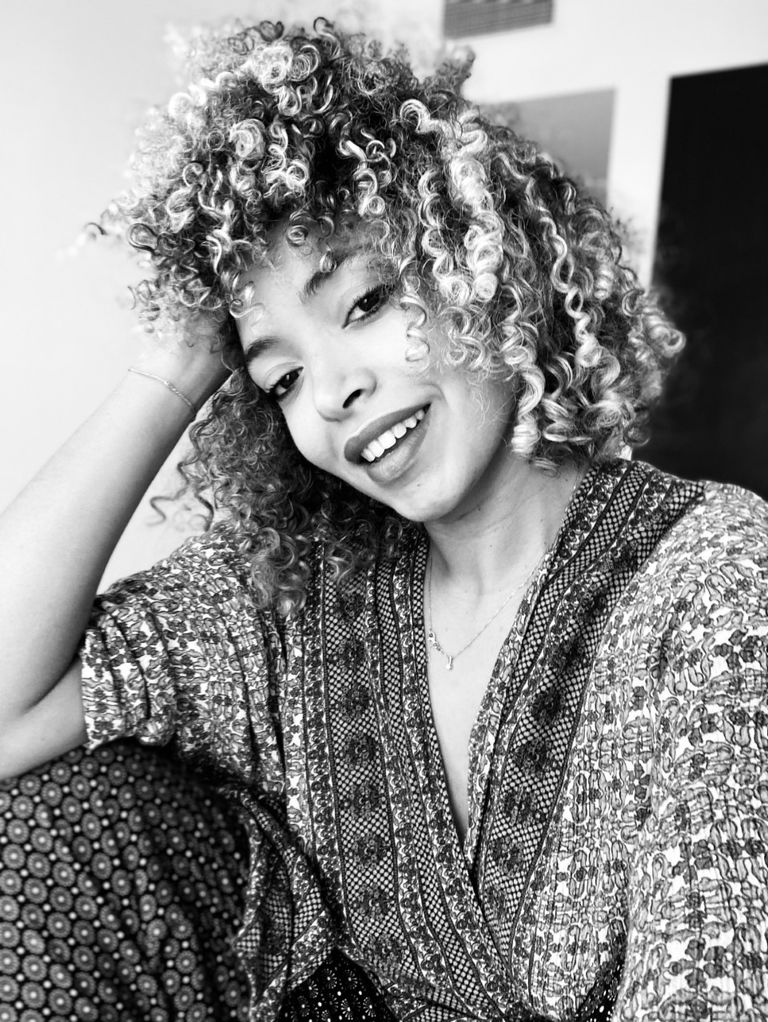
Can you tell us a bit more about how and why you create?
At times, I enjoy creating with different background tunes. Depending on the mood, it may be light harmonious melodies, or loud, heavy beats that shake the room. Then again, I enjoy podcasts that present interesting topics or address current events. Once my process begins, time ceases to exist, which on occasion, makes me become unaware of my surroundings and completely lost in a world with no boundaries or limitations. It’s somewhat of a hypnotic state, keeping me alone for weeks at a time, unfazed, well caffeinated, and at peace being in my own element. There’s also the need to find a balance creating amongst my family and friends, while fighting the urge to be alone with my own thoughts. Although challenging at times, building memories with loved ones while splashing paint on a canvas or doodling at the same time can be highly rewarding and unforgettable.
The great Nina Simone said, “An artist’s duty, as far as I am concerned, is to reflect the times.” That statement alone, coming from an individual whose artistic contributions to society speak for themselves, has impacted my overall perception in several ways—not only “why” I choose to create, but also my duties as a creator. My main focus is to depict the shifts in emotional challenges and societal pressures we’re faced with, when confronted with the realization that in order to coexist we must constantly adapt to a civilization thrust through a chain of cascading events we may have no control over.
Scrolling through your IG page it’s obvious that you like mixing it up—you’ve shared tattoo designs, digital illustrations, and paintings. You create boldly in black and white, but you also aren’t afraid of bright colours. What inspires your style? How has it evolved over time?
Inspiration manifests itself in many shapes and forms, whether it be a joyful event, heated discussions that allow me to view the world from someone else’s perspective, embracing new challenges that take me out of my comfort zone, artwork that speaks to me, a melody that moves me, or being surrounded by nature, which has the greatest effect on me. These aspects contribute to my gravitation towards alternative methods of creating: from painting colorful, vibrant abstract landscapes, detailed digital designs, black and white tattoos, Arabic calligraphy or occasionally writing.
My artwork has evolved through my increase in confidence and self-assurance. Granted, there are countless days I feel I could do better, be better, and create better. But, in the last years it has occurred to me that we are our own toughest critics, which if utilized in a constructive manner, could lead to greatness as you become more inquisitive, active, creative, educating yourself through multiple outlets, while striving to achieve more and always remain open to learning from others, and accepting your mistakes.
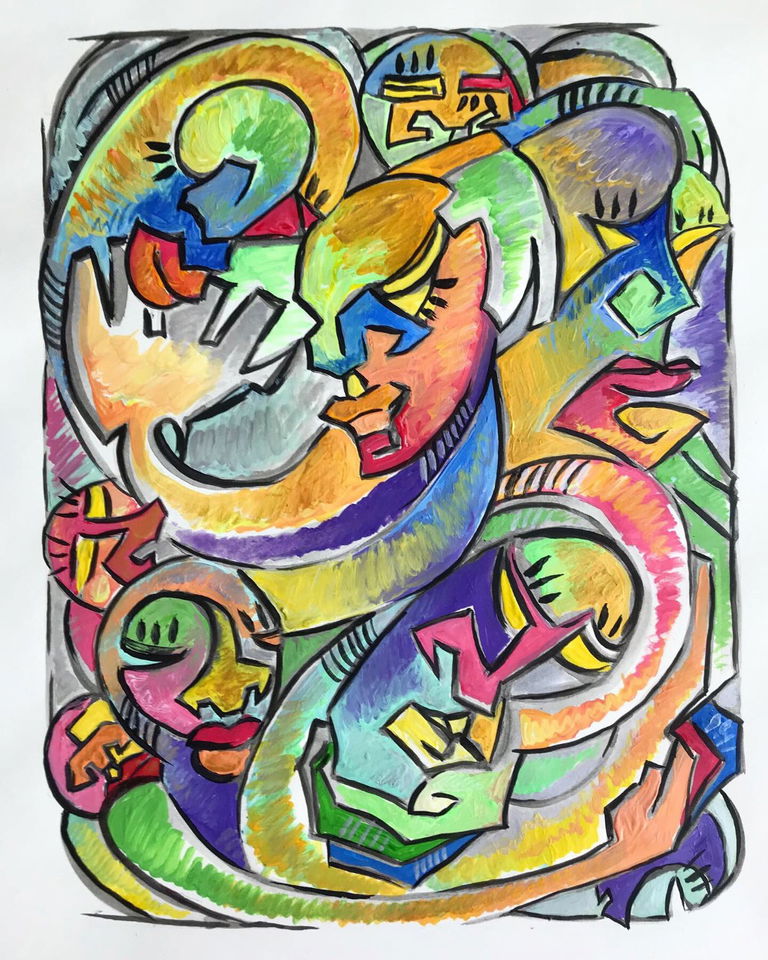
The arts and culture sector has been particularly devastated by the COVID-19 pandemic. How have you nurtured or cultivated your creativity during these uncertain times?
Art has always allowed me to escape some of life’s toughest trials and tribulations, such as Covid-19. It’s during these difficult times I find myself creating and developing some of my finest pieces. I feel creativity sparks when emotions are heightened through positive or negative experiences.
Creating has long been therapeutic in many ways for me. The thought of possessing an outlet that grants me the opportunity of withdrawing from daily reality, placing all my fears, insecurities, anxieties or pressures of life aside, can be a great relief when faced with challenges such as the pandemic. Therefore, the urge to use brighter colors, larger canvases, apply more detail, while taking my time has become my priority during this particular time, sharing with my viewers a sense of enlightenment, and hoping to ease troubled minds.
Over the last year, the art world has had a powerful response to the Black Lives Matter movement and the current era of socio-political unrest. Why is art such a vital medium?
Art is a powerful medium in times of civil unrest as it is an unapologetic, universal language that captures the voices of those seeking justice for loved ones lost to State violence, racism, or acts of injustice by keeping alive the memory of those who were taken, ensuring their names, faces and societal contributions are given a platform, spreading their truths across the globe.
It is imperative that the art community stands as a beacon of hope and acts as one vessel during such crucial times, spreading the values of equality and social justice for those that have fallen victim to such heinous crimes.

Art has a serious role to play, but it can’t do everything. What is the role of the audience/viewer and why is it important?
A viewer should attempt to look past the obvious when admiring any artwork. Art should provoke intuition and curiosity, prompting the audience to question the artist’s motives and the emotional quotient behind every stroke. Regardless of the amount of information a creator chooses to provide their audience with, words can never fully express the degrees of depth, vulnerability, and transmutation of energy that takes place during a creator’s artistic process. Therefore, it’s highly rewarding to both viewer and artist when the focus shifts beyond the scope of how or what the artist’s vision consisted of, to the audience’s personal view, gravitational attraction towards a particular piece, which in all likelihood has subliminally communicated to their subconscious on several levels.
Exhibiting my work has proven to be a great tactic (ice breaker), when inviting members of the public to participate in open dialogues, whether it be about art or more pressing matters such as activism or the current social climate. This includes connecting with new artists, reaching out to members of the community as well as other like-minded creators, all coming together for a common cause.
Due to the restrictions caused by the pandemic, social media has become a primary source and powerful platform with few limitations when connecting to a wide range of audiences. This can be a pleasant form of communication, offering the opportunity to cultivate alternative perspectives or critiques between individuals that are keen on pushing boundaries on every level, granting me the opportunity to provide more insight into my goals as a creator and activist.
I highlight the importance of strength in unity, for example, reflecting on moments within the George Floyd protests when white protestors created physical barriers between Black protesters and law enforcement, chanting “Black Lives Matter”. This gesture alone signified that the first step to becoming an advocate is acknowledgment. Acknowledgment of the global issues surrounding race, colourism, State violence against minorities, or the social inequality that has shattered communities for decades, while being open to having uncomfortable discussions that can lead to necessary, massive changes within our communities. Acknowledgment is an active pillar to every conversation regarding race and the first step to becoming an advocate.
In conclusion, an advocate should not wait to be invited to the conversation. The conversation has been active throughout history and will continue far into the future. Simply pull up a chair at the table and jump right into the discussion, there’s plenty of room.

How has the role of community (however you choose to define ‘community’) impacted your arts practice?
My community has acted as a support system throughout my career as a creator, encouraging my artistic drive, passion towards developing meaningful creations and self-expression, no matter the direction or manner I choose to conduct them in. It’s the safety net that allows me to freely convey my truths without fear of judgment or non-acceptance by others.
Community is a source of inspiration that has impacted my life in many ways. For example, I love engaging in enlightening conversations with strong female friends, who collectively support one another and encourage me to always speak my truth, no matter the outcome. I’m also inspired by my family members, such as my brother and role model, Mohammed Göess Peoples. Mohammed’s form of creative expression in giving back to the community was to establish a BLM Zoom platform along with his friend and co-founder, Ikram Aslam. It serves as a safe space for members to share everyday experiences regarding race that have affected them personally and work together towards achieving social reform. Guest speakers from various educational backgrounds, including psychology, join the discussions and shed light on urgent topics such as maintaining mental health during the pandemic and much more.
What’s next for you creatively?
Creatively speaking, I plan to place more energy into larger-scaled projects. As a child I found myself sticking to small but detailed doodles due to an inward discomfort or unease with being in my own skin. Over time my artwork has evolved from shy and polite to loud and confident and continues to grow. I’m eager and looking forward to showcasing more of my work in the near future.
Where can people go to see what you’re working on and keep up with your creative output?
Instagram: @Aliagpeoplesart
This article is part of a special series shouting-out new or rising artists creatives, and/or collectives from across the country that should be on your radar. Explore more profiles below:
